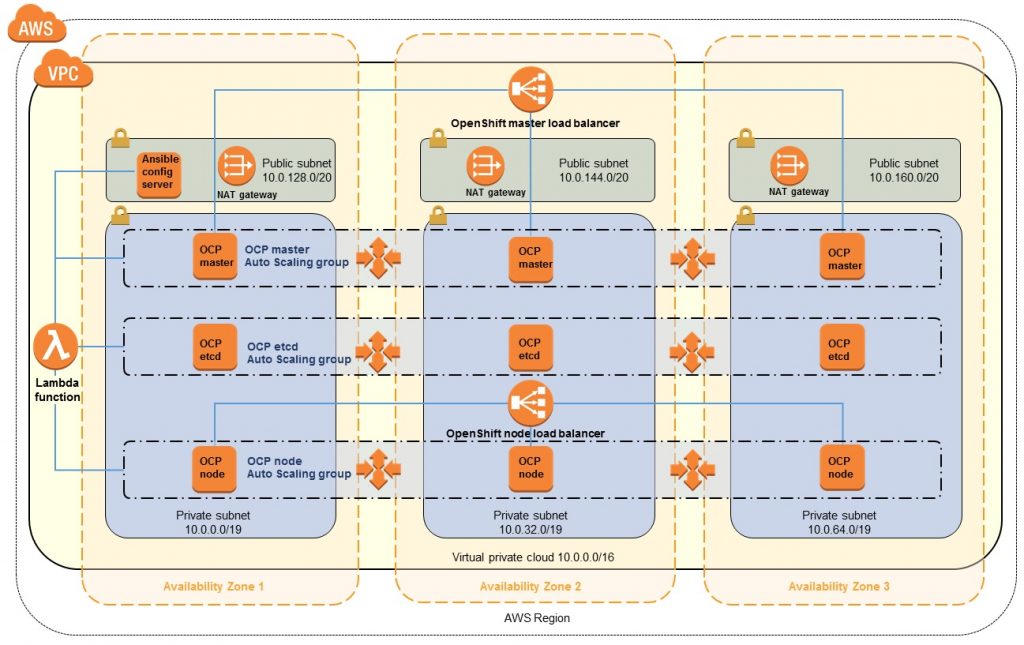AWS Partner Network (APN) Blog
Updated Red Hat OpenShift on AWS Quick Start with AWS Service Broker
By Ryan Niksch, Partner Solutions Architect at AWS
AWS Quick Starts are automated reference deployments that use AWS CloudFormation templates to deploy key technologies on Amazon Web Services (AWS) and follow AWS best practices.
A new update for the Red Hat OpenShift on AWS Quick Start improves usability by simplifying the management of certificates and domain names, and provides customers with the ability to scale workloads. Red Hat is an AWS Partner Network (APN) Advanced Technology Partner.
Users can also enable AWS Service Broker via a parameter input during stack launch. AWS Service Broker is a new open source project directly integrated into OpenShift, allowing you to deploy AWS services without leaving the application platform.
See the Red Hat OpenShift on AWS Quick Start >>
About the Update
This Quick Start sets up a cloud architecture and deploys Red Hat OpenShift Container Platform on AWS. It has full Amazon Route 53 and AWS Certificate Manager (ACM) support, allowing you to provide fully-qualified domain name spaces and matching certificates for signing and security by adding the desired domain names to the stack parameters.
The addition of public-facing Elastic Load Balancers (ELBs) caters to application management via the OpenShift service catalog for developers and operations teams. On-premises teams can traverse the Virtual Private Network (VPN) links into Amazon Virtual Private Cloud (Amazon VPC), or manage applications directly over secure HTTPS connections.
You do not need to configure post provisioning tunneling or port forwarding—just add the CIDR for desired access and the Quick Start completes all the heavy lifting.
By taking advantage of automatic scaling, you can manage the number of nodes processing workloads within the cluster. This is perfect for growing teams or a rapid workload increase. You can scale OpenShift cluster size simply by changing a value.
AWS Service Broker is built around the industry standard Open Service Broker API. Users of the Red Hat OpenShift Container Platform, for example, can provision AWS services such as Amazon Relational Database Service (RDS), Amazon EMR, and Amazon DynamoDB directly from the platform without interfacing with the AWS API.
Customers with compliance or business requirements dictating the need for solutions to exist behind proxy layers are able to take advantage of version 3.9 full proxy support.
To get started with RedHat OpenShift on AWS:
- View the architecture and details
- Read the deployment guide for step-by-step instructions
- Download the AWS CloudFormation templates that automate the deployment
- Browse and launch other AWS Quick Start reference deployments
- Request AWS Credits for your OpenShift deployment

Figure 1 – Red Hat OpenShift Container Platform with Kubernetes orchestration on AWS.
